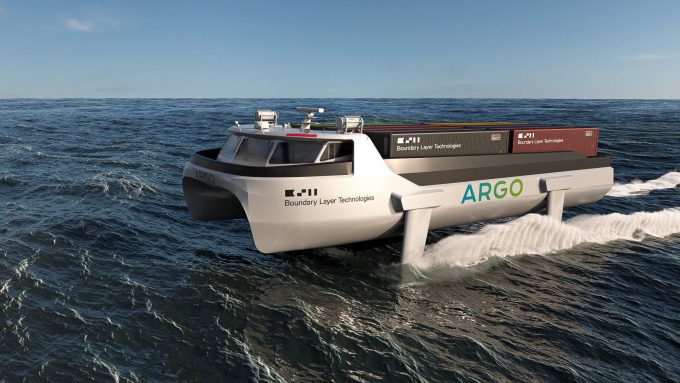
Sea freight is about to challenge Asian air cargo services with the introduction of a fast vessel powered by green hydrogen, says its designer, Boundary Layer Technologies (BLT).
Schneider Electric and two other companies have signed letters of intent to purchase the Argo hydrofoil, which is due to be launched in intra-Asia tradelanes in the first quarter of 2025.
BLT claims Argo can help transport companies meet their end-to-end carbon neutrality commitments.
The vessel will have a range of 1,500 nautical miles and cruise at 40 kt. It is intended to be used as a replacement for short-range air freight transport. However, discussions with yards in Scandinavia, the Mediterranean and southeast Asia to build the first vessel are ongoing, with the complexity added to by the design’s propulsion system.
Argo is intended to be be powered by green liquid hydrogen fuel cells, although BLT has yet to secure a supply contract for green hydrogen. And while BLT intends the green hydrogen to be generated from renewable sources, it is unclear yet whether the operation of Argo will be a process of zero emissions or net zero emissions.
It is further unclear whether dedicated pipelines for the transport of green hydrogen to the ports used by Argo will be built in time for its launch.
BLT claims Argo can replace air freight with only a small increase in door-to-door transit time. Marcus LeMaster, global director of logistics sustainability at Schneider Electric, said: “We recognise that new technologies like Argo play an important role in reducing carbon emissions, especially in hard-to-abate sectors like air transport.”
Argo can only carry 20 teu, but BLT will target high-value, time-sensitive cargo (electronics, automotive parts, pharmaceuticals, etc). And it will be equipped with the necessary equipment and electrical power to support reefer containers
BLT claims to offer freight prices that will be 50% cheaper than air freight, based on average 2019 rates for intra-Asia tradelanes.
